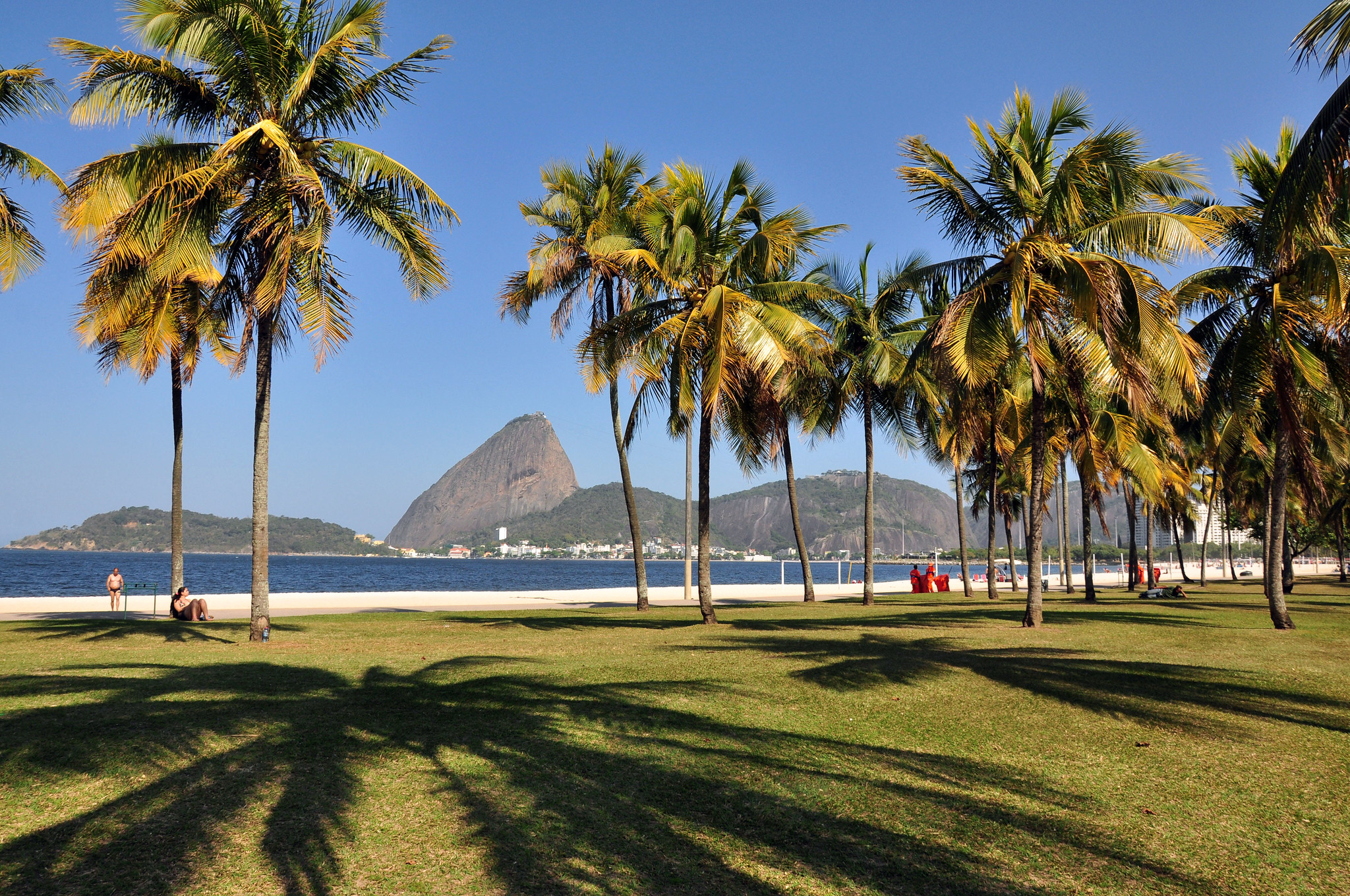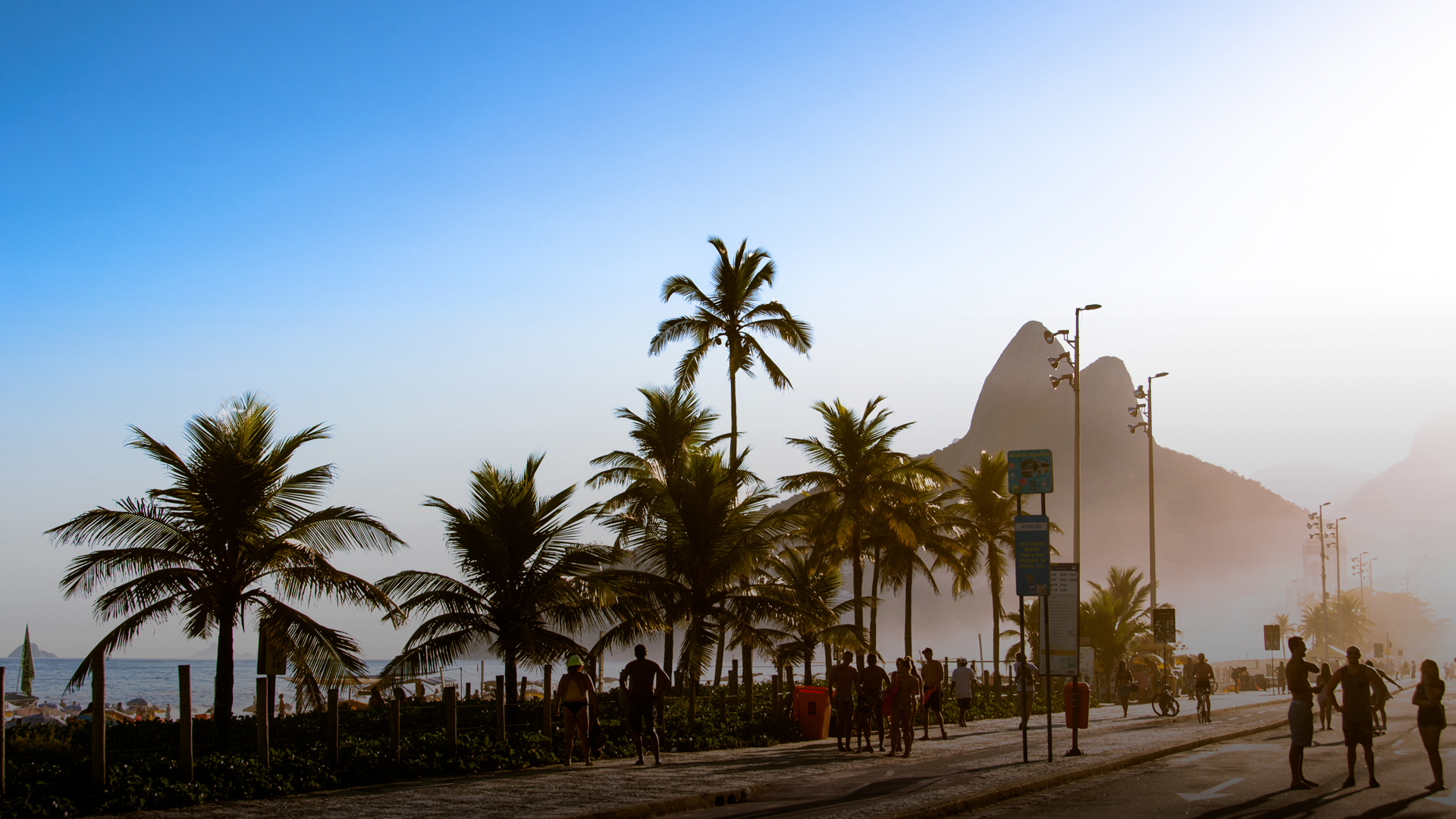Sandwiched between Botafogo and Centro is the neighborhood of Flamengo. The name has two variations according to legends. Others believe that it was because of the large population of the pink birds during colonial times.
Still another common theory points to the time when Flemish prisoners of war were imprisoned here during the 1700s.
Flamengo Park
The Parque do Flamengo is considered a sports shrine in Rio.

Créditos: RioTur
The park’s official title is 'Parque Brigadeiro Eduardo Gomes' but everybody knows it as 'Aterro do Flamengo' or simply as 'Aterro'. It is the largest park in the whole of Rio de Janeiro covering 1.2 million square meters that was reclaimed from Guanabara Bay.
Designed and built by Lota de Macedo Soares in 1965, its gardens were conceptualized and manicured to perfection by the famous Burle Marx.
The Carmen Miranda Museum, Modern Art Museum and the Monument to the World War II Dead Soldiers are located within the park.
A sculpture of Aztec emperor Cuauhtemoc can also be found at the park. Marathons almost always end in Flamengo Park. It was the host of the 2016 Olympics for race and road cycling.
Historic memorials and institutions at the Flamengo park
As mentioned before, the Carmen Miranda Museum situated to the south of the park was built in honor of famous actress and singer Carmen Miranda, who managed to break into Hollywood in the 1940s and 1950s. The shrine has 3,000 items owned or worn by the actress.
The World War II Monument is a unique edifice. It was constructed in reverence to the brave soldiers of the Brazilian Expeditionary Force who died in the line of fire while fighting in Italy during the Second World War.
There’s also a museum in the monument which shows some artifacts from those battles. Near the park, you can find the 'Museu da República' within the district that was used to be referred to as ‘Catete Palace,’ where the former presidents used to live until the 1960s when the place was converted into a museum.
The museum features several rooms called Banquette, Venetian or Moorish which showcase different furniture pieces of old French and Brazilian designs. Paintings by Rodolfo Amoedo and Gustavo dall'Ara are displayed here, as well as Rodolfo Bernadelli sculptures.
Different pieces including various porcelains and chandeliers mirror the dominant concepts of the time. For the macabre, President Getulio Vargas killed himself in one of the rooms here way back in 1954.
Eat and learn at the same time
The long-winded name of the 'Casa de Arte e Cultura Julieta de Serpa' speaks volumes about what you can expect inside. Here, concerts and exhibits are regularly held to show the finer things in life.
A pleasant surprise, however, is the 'Blason' restaurant located inside which serves exquisite French dishes. The 'Salao D'Or' offers tasty snacks and refreshing tea.
Street bands during Carnival
Rio neighborhoods typically create their own bands called blocos. The 'Bloco Cachorro Cansado,' 'Sargento Pimenta' and 'Larga A Onca' are bands that calls Flamengo their home.




